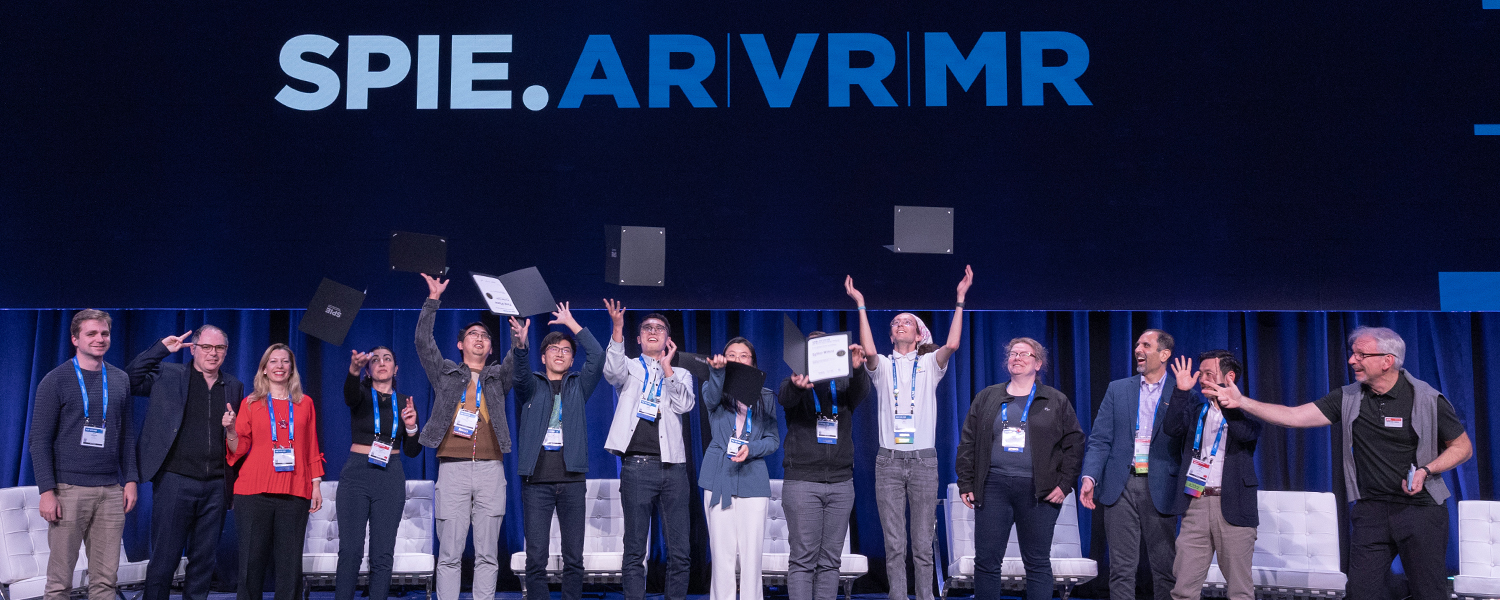
The SPIE AR | VR | MR Student Optical Design Challenge is designed to encourage and acknowledge excellence in oral and poster presentations by students. The aim is to bridge the gap between traditional academic optics and industry expectations for today’s immersive display products.
The main element of the challenge is the three (3) minute pitch in which the participants present their design with an explanation of how it best overcomes the selected challenge. A jury comprised of industry leaders, technical experts from sponsoring organizations, and leading academic figures in AR, VR, and MR adjudicate the challenge presentations.
Thanks to generous sponsorship, the top three participants will receive monetary prizes awarded on the AR | VR | MR Main Stage.
Students interested in participating in the 2025 AR | VR | MR Optical Design Challenge must submit an abstract to the Optical Architectures for Displays and Sensing in Augmented, Virtual, and Mixed Reality (AR, VR, MR) Conference. More details for participation will be provided later this year, after participants are notified of acceptance into the conference program.
| Prize | Speaker/Author | Affiliation |
| Winner, 1st Place | Zhenyi Luo | CREOL, The College of Optics and Photonics, Univ. of Central Florida |
| 2nd Place | Wan-Pin Tsai | National Taiwan Univ. of Science and Technology |
| 3rd Place | Yuqiang Ding | Univ. of Central Florida |
Participants
Qian Yang, CREOL, The College of Optics and Photonics, Univ. of Central Florida
Myeong-Ho Choi, Inha Univ.
Tianyao Zhang, Wyant College of Optical Sciences, The Univ. of Arizona
|
Judge Name |
Affiliation |
|
Christophe Peroz |
|
|
Emilie Viasnoff |
Synopsys |
|
Amy Wang |
Meta |
|
Hong Hua |
Univ. of Arizona |
|
Naamah Argaman |
Meta |
|
Daniel Nikolov |
Univ. of Rochester |
|
Bernard Kress |
|
This challenge provides a unique opportunity for students to demonstrate design skills and gain exposure to some of the industry's top companies.
Participant information and a description of all projects will be listed on the SPIE AR | VR | MR website and in conference program materials. Submitted papers will be published in SPIE Proceedings.
Winners will be acknowledged during an awards presentation, online after the conclusion of the conference, and may be highlighted in SPIE media.
Monetary prizes will be awarded as follows:
1st: $3,000-$5,000
2nd: $1,500-$2,500
3rd: $750-$1,250
In order to be eligible for the SPIE AR | VR | MR Student Optical Design Challenge, the presenter must register, attend, and give a technical talk at the SPIE Optical Architectures for Displays and Sensing in Augmented, Virtual, and Mixed Reality (AR, VR, MR) V conference.
The choice optical design software is up to the student. However, participating sponsors may offer their optical design software for use by any student registering in this challenge. More details will be announced in the instructions sent to participants.
Yes, any number of them, from either academy or industry. However, the primary author/presenter must be a registered full-time student.